Nikon Nikkor AF-S 20 mm f/1.8G ED
3. Build quality
In the photo below the tested lens is positioned between the Nikkor AF 50 mm f/1.8D and the Sigma A 35 mm f/1.4 HSM.
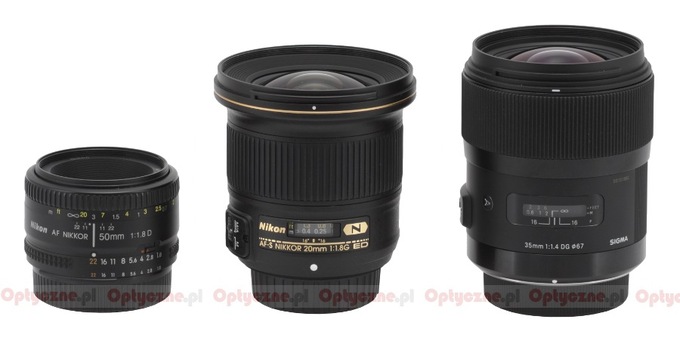 |
Please Support UsIf you enjoy our reviews and articles, and you want us to continue our work please, support our website by donating through PayPal. The funds are going to be used for paying our editorial team, renting servers, and equipping our testing studio; only that way we will be able to continue providing you interesting content for free. |
- - - - - - - - - - - - - - - - - - - - - - - - - - - - - - - - - - - - - - - - - - - - - - - -
The Nikkor AF-S 20 mm f/1.8G ED begins with a metal mount surrounding a rear element, 28 mm in diameter. That element is positioned almost on the same level as the mount with the focus set at infinity. When you pass to the minimum focusing distance the element hides inside the barrel over 0.5 of a centimeter deep but without revealing any electronic parts.
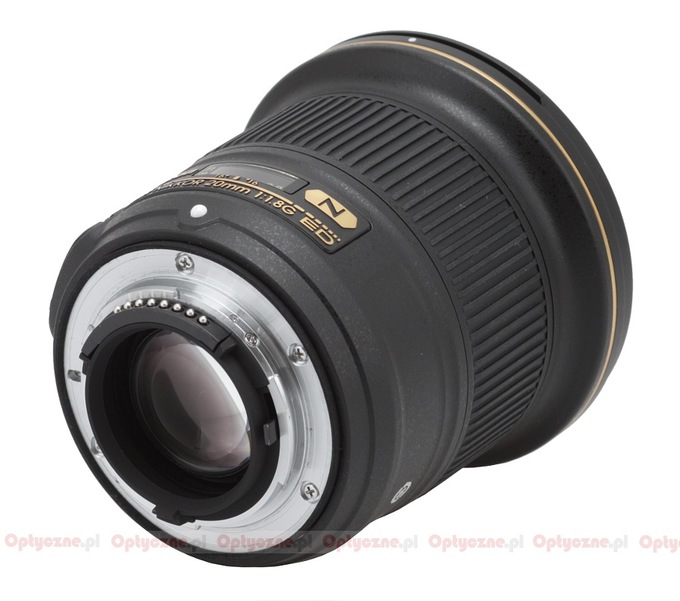 |
The proper casing of the lens, covered by plastics, starts with a white dot making the alignment with a camera body easier. Immediately after that dot you find a plate with the name and the parameters of the lens and a capital “N” meaning that nano crystal coating has been applied. Between the “Nikon” inscription and the “N” letter you get a distance scale behind a window, expressed in meters and feet. The depth of field scale is quite symbolic by the way, with markings just by f/16.
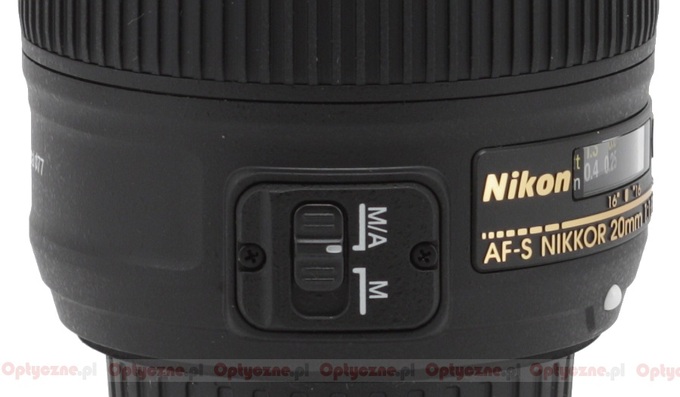 |
On the left side of the lens you see a focusing mechanism mode switch (M, M/A); on the other side of the plate there is information concerning the basic properties of the Nikkor, its serial number and an inscription “MADE IN CHINA”.
A manual focus ring, 28 mm wide, is another part of the lens. It is comfortable to handle mainly due to rubber ribbing. Unfortunately its performance is hardly great. First, its range amounts to just 90 degrees which, by definition, won’t allow you any precise settings. What’s more, the ring has the traditional affliction of many contemporary Nikkors - a distinct slack. You can turn it by two wide ribs without any result whatsoever concerning the change of focus; only after that two ribs turn the ring ‘catches on’ and starts working properly. Such a flaw couldn’t be tolerated even in cheap instruments from the bottom of the range and here, after all, you are supposed to deal with a good quality “prime”, priced at 3,000 PLN – it’s really difficult to understand…
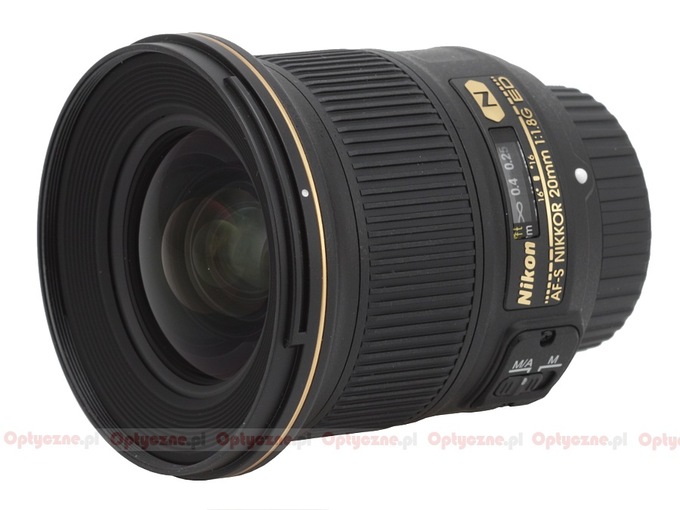 |
Behind the ring which deserved so much bitter words you see an immobile part of the casing with a golden stripe which turns smoothly into a hood mount for a petal-type lens hood.
The front element is immobile as well, slightly convex and 51 mm in diameter. It is surrounded by a filter thread, 77 mm in diameter.
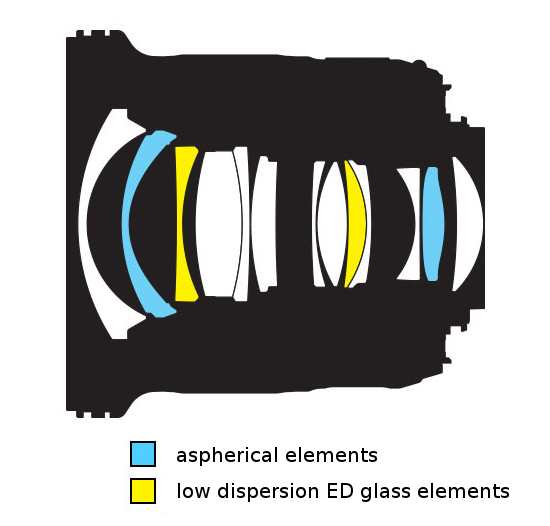 |
When it comes to the optical construction you deal here with 13 elements positioned in 11 groups. Two elements were made of extra low dispersion ED glass, two others are aspherical. Inside you can also find a round aperture with seven diaphragm blades which you can close down to maximum f/16.
The Nikkor AF-S 20 mm f/1.8G ED comes with a soft pouch CL-1015 and a hood HB-72 in the box.
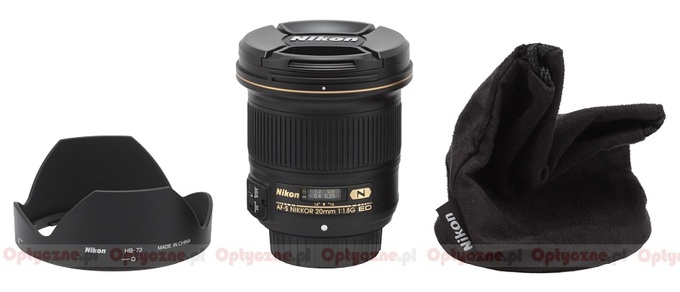 |






